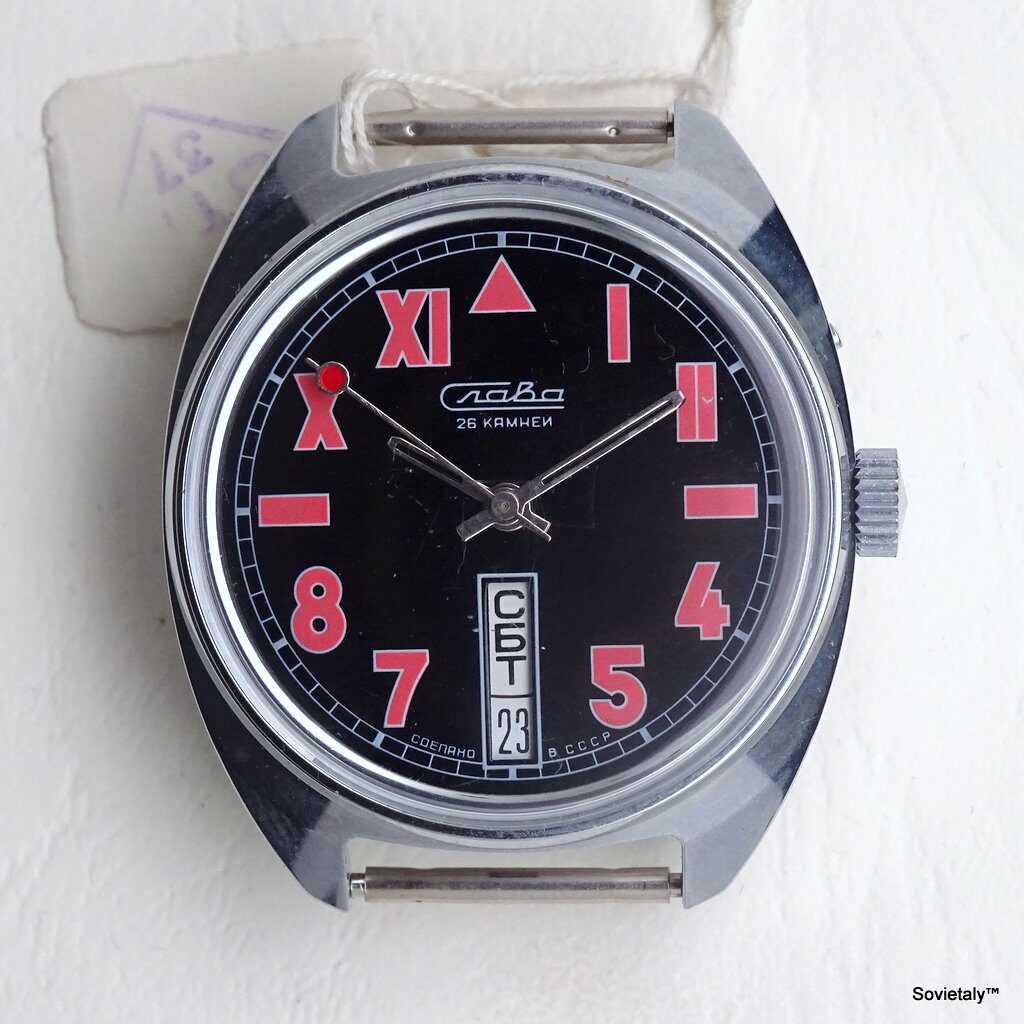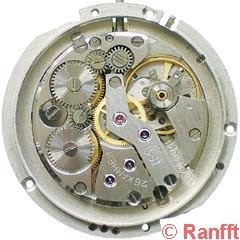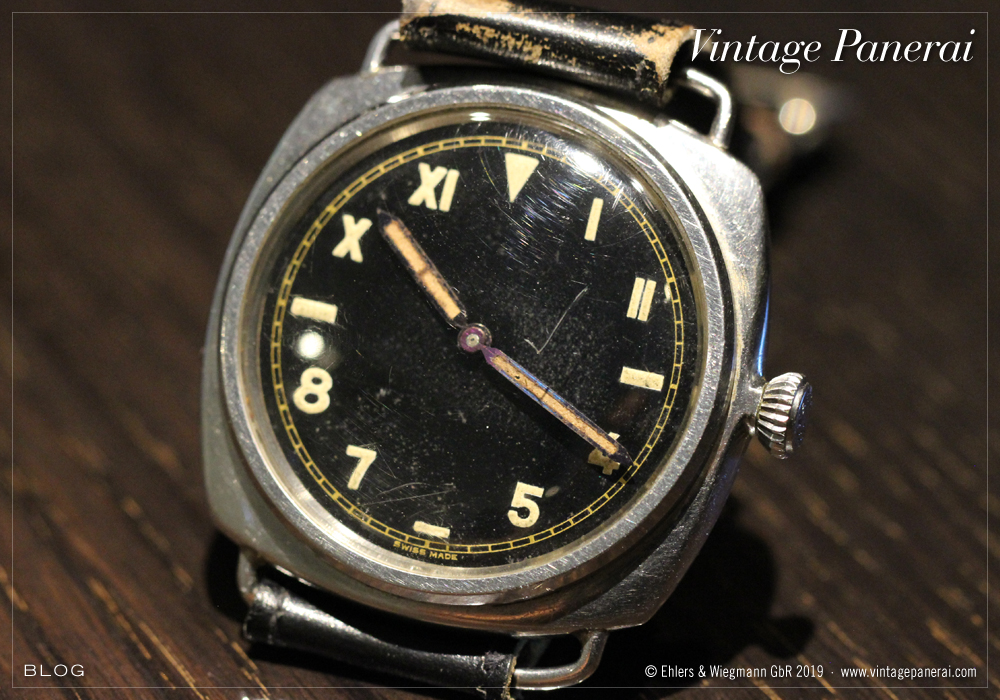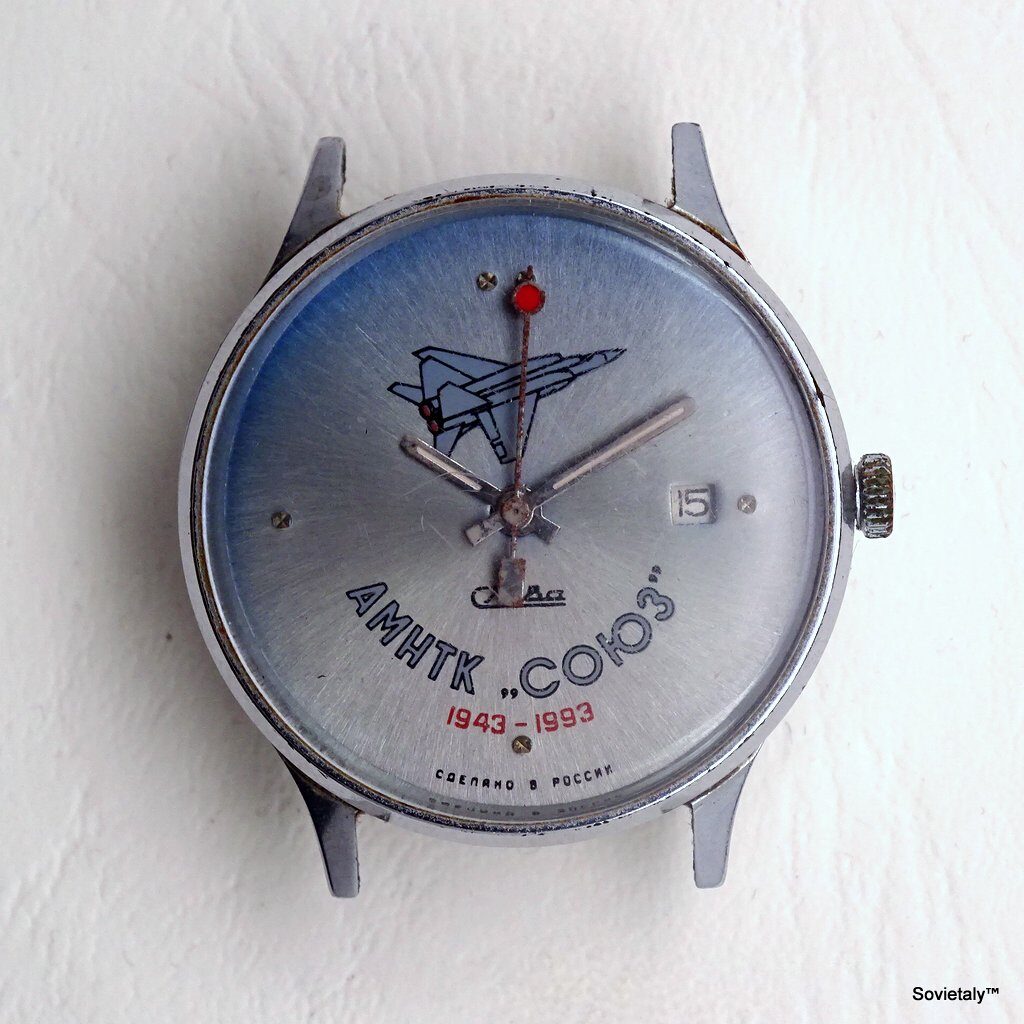Slava watches are renowned for their quality and reliability, and the Slava California watch is no exception. Produced by the Second Moscow Watch Factory, this watch stands out not only for its unique design but also for its historical and technical significance. In this article, we will explore the features of the Slava California watch, the Slava 2428 caliber, and the fascinating stories behind the famous “California” dial used by Rolex and Panerai.
Description of the Slava California Watch

Design and Case
The Slava California watch is easily recognizable by its distinctive dial, featuring a combination of Roman numerals on the upper half and Arabic numerals on the lower half. This unique design is complemented by:
- Chrome-Plated Brass Case: The brass case with chrome plating gives the watch an elegant appearance, though it is less resistant to everyday wear. Over time, the chrome can deteriorate with daily use and contact with sweat.
- Black Dial: The black background of the dial provides perfect contrast with the pink hour markers outlined in gray, enhancing readability.
- Minute Markers: Gray, aligned along the railroad track surrounding the dial.
- Polished Metal Hands: The hands, without luminous material, feature a hollow interior, while the second hand is distinguished by a red “lollipop.”
- Date Display at 6 o’clock: The date display at 6 o’clock allows for vertical reading of the date and day, a practical and distinctive feature.
Technical Details of the Slava 2428 Caliber

The heart of the Slava California watch is the Slava 2428 caliber, a manual winding mechanical movement known for its reliability. Here are the technical specifications:
- Dimensions: 13 lines (32.2 mm diameter).
- Height: 4.85 mm.
- Power Reserve: 47 hours.
- Frequency: 18,000 vibrations per hour (vph).
- Jewels: 17.
- Complications:
- Sweeping Seconds.
- Day and Date.
- Regulator Type: Pinned regulator (or index regulator).
- Escapement Type: Swiss lever escapement.
- Winding and Setting: Stem winding, stem setting.
The Story of the California Dial: Rolex and Panerai
The “California” dial has a fascinating history involving some of the most prestigious watch brands.


Origins of the California Dial
The term “California dial” originated in the 1980s when dial refinishing shops in Los Angeles, particularly on Melrose Avenue, began using the half Roman, half Arabic design to refinish vintage watch dials. This style quickly became popular among collectors of Rolex “Bubbleback” watches (Welcome to RolexMagazine.com) (Fratello Watches).
Rolex and Panerai
Rolex was one of the first to use the California dial in the 1930s and 1940s, particularly in models designed for Panerai, which supplied watches to the Italian Navy. These watches were known for their readability and robustness, essential features for underwater missions (Watch Swiss).
The Rolex California
The California dial of Rolex has become an icon among collectors. Initially used to improve readability in difficult conditions, it was later adopted by various vintage models. Today, the California dial is highly sought after and represents a piece of watchmaking history.
Beware of Counterfeits
Unfortunately, with the growing popularity of the Slava California watch, unscrupulous sellers have emerged, counterfeiting California dials for these watches. Fake dials can be found on various marketplaces, so it is important to be cautious and verify authenticity before making a purchase.

The Value of the Slava California Watch Among Collectors
The Slava California watch has become highly sought after among collectors. The combination of unique design, fascinating history, and technical reliability has increased its market value. Currently, a Slava California in excellent condition can fetch between 300 and 350 euros.
Conclusion
The Slava California watch is more than just a timepiece; it is a piece of watchmaking history. With its distinctive design and robust Slava 2428 caliber, it continues to captivate collectors worldwide. Whether you are a vintage watch enthusiast or a collector seeking unique pieces, the Slava California is an excellent choice.





